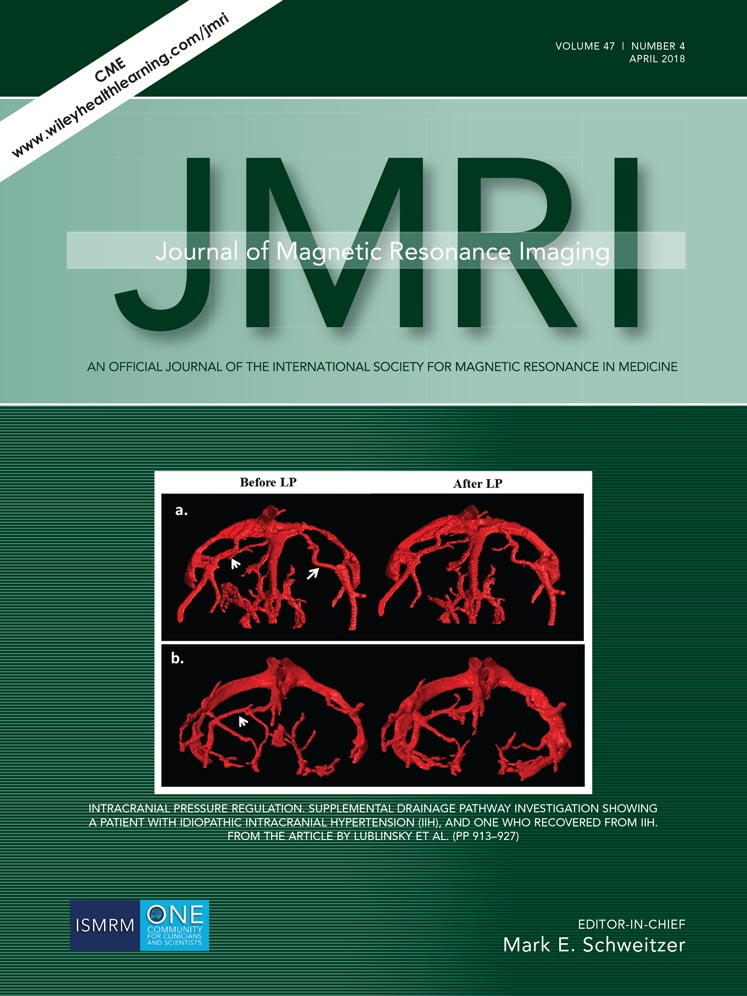Optimization of region-of-interest sampling strategies for hepatic MRI proton density fat fraction quantification
Abstract
BACKGROUND
Clinical trials utilizing proton density fat fraction (PDFF) as an imaging biomarker for hepatic steatosis have used a laborious region-of-interest (ROI) sampling strategy of placing an ROI in each hepatic segment.
PURPOSE
To identify a strategy with the fewest ROIs that consistently achieves close agreement with the nine-ROI strategy.
STUDY TYPE
Retrospective secondary analysis of prospectively acquired clinical research data.
POPULATION
A total of 391 adults (173 men, 218 women) with known or suspected NAFLD.
FIELD STRENGTH/SEQUENCE
Confounder-corrected chemical-shift-encoded 3T MRI using a 2D multiecho gradient-recalled echo technique.
ASSESSMENT
An ROI was placed in each hepatic segment. Mean nine-ROI PDFF and segmental PDFF standard deviation were computed. Segmental and lobar PDFF were compared. PDFF was estimated using every combinatorial subset of ROIs and compared to the nine-ROI average.
STATISTICAL TESTING
Mean nine-ROI PDFF and segmental PDFF standard deviation were summarized descriptively. Segmental PDFF was compared using a one-way analysis of variance, and lobar PDFF was compared using a paired t-test and a Bland–Altman analysis. The PDFF estimated by every subset of ROIs was informally compared to the nine-ROI average using median intraclass correlation coefficients (ICCs) and Bland–Altman analyses.
RESULTS
The study population's mean whole-liver PDFF was 10.1 ± 8.9% (range: 1.1–44.1%). Although there was no significant difference in average segmental (P = 0.452) or lobar (P = 0.154) PDFF, left and right lobe PDFF differed by at least 1.5 percentage points in 25.1% (98/391) of patients. Any strategy with ≥4 ROIs had ICC >0.995. 115 of 126 four-ROI strategies (91%) had limits of agreement (LOA) <1.5%, including four-ROI strategies with two ROIs from each lobe, which all had LOA <1.5%. 14/36 (39%) of two-ROI strategies and 74/84 (88%) of three-ROI strategies had ICC >0.995, and 2/36 (6%) of two-ROI strategies and 46/84 (55%) of three-ROI strategies had LOA <1.5%.
DATA CONCLUSION
Four-ROI sampling strategies with two ROIs in the left and right lobes achieve close agreement with nine-ROI PDFF.
Level of Evidence: 3
Technical Efficacy: Stage 2
J. Magn. Reson. Imaging 2018;47:988–994.




